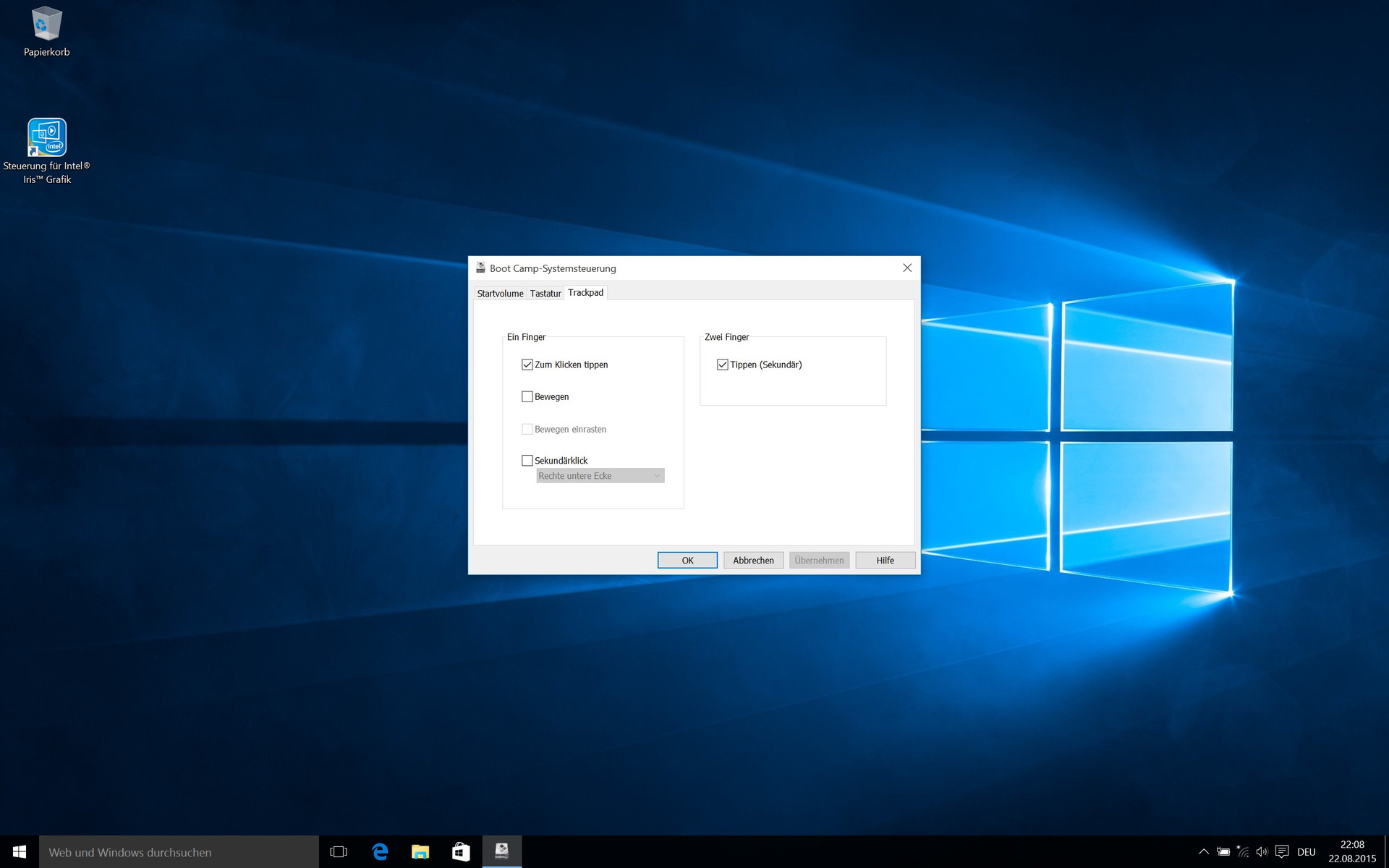Screen brightness not working in Bootcamp Windows 10 MBP late 2012 15' Mac I have a Macbook Pro 15' late 2012 running with bootcamp (mostly for light PC gaming) and with the new fall creators update for Windows 10, I have not been able to adjust the brightness of the screen, either using the FN+F2 shortcut, or using the built in windows screen. I am using windows 10 on bootcamp on macbookpro. While fiddling with quick settings corner, I ended up selecting 0% brightness. And now I cannot get screen to brighten. Its stuck at 0% and the macbook brightness control keys are not working with windows 10. My windows 10 is all dark and unusable. Turn Off 'Adjust My Screen Brightness Automatically' Setting; I hope this helps. If anyone is having problems with Windows 10 bootcamp, I would strongly recommend installing the most up-to-date bootcamp drivers. I lost my F-key functionality after the upgrade, and reinstalling the updated drivers resolved that issue. Not being able to change the brightness of your screen from the taskbar or the Notification Center is a big inconvenience for Windows 10 users as they would alternatively have to search for brightness settings deep inside the Settings app each time they have to change the brightness of the screen.
Summary :
This post aims to help you fix Windows 10 adaptive brightness missing, and solve Windows 10 adaptive brightness not working or won’t turn off issue. For other Windows issues, like data loss, partition management, system backup and restore, MiniTool software offers you feasible solutions.
Bootcamp Windows 10 Brightness Not Working On Computer
If you find Windows 10 adaptive brightness is missing and there is no adaptive brightness option in windows 10, try to fix this problem with the solution below.
Still, if you encounter Windows 10 adaptive brightness not working or won’t turn off error, this post also offers some solutions to help solve this error.
How to Fix Windows 10 Adaptive Brightness Missing
If you want to enable adaptive brightness in Windows 10 from Display Settings window but find that the option is missing, you can make sure the Enable adaptive brightness option is enabled. And then check again if the adaptive brightness option shows in Display Settings window.

- You can click Start and type power options, click Power & sleep settings.
- Next click Additional power settings in the right window.
- Click Change plan settings next to your active power plan.
- In the Edit Plan Settings window, you can click Change advanced power settings.
- In Power Options window, click Display -> Enable adaptive brightness, and turn on Windows 10 adaptive brightness.
If you don’t see the enable adaptive brightness option in Power Options window either, maybe it’s because your computer doesn’t support the adaptive brightness feature.
Learn how to disable or turn off adaptive brightness on Windows 10 in 4 steps if you don’t like the automatic brightness adjustments in Windows 10.
How to Fix Windows 10 Adaptive Brightness Not Working
If Windows 10 adaptive brightness is not working or won’t turn off on your Windows 10 computer, you can try the solutions below to see if you can fix it.
Fix 1. Troubleshoot Computer Power Settings
- You can press Windows + I to open Windows Settings, click Update & Security, and click Troubleshoot in the left panel.
- Scroll down to find Power option in the right window, click it and click Run the troubleshooter button to start to find and fix problems with your computer power settings.
Fix 2. Reset Power Plan Settings to Default
- You can open Command Prompt in Windows 10. Press Windows + R, type cmd, and press Ctrl + Shift + Enter to run Command Prompt as administrator.
- Then you can type the command line powercfg –restoredefaultschemes in Command Prompt, and hit Enter to execute the command to reset Power Plan settings to default.
Bootcamp Brightness Keys Not Working Windows 10
Fix 3. Update Your Computer Graphics Driver
- At first, you can open Device Manager on Windows 10 by pressing Windows + X and selecting Device Manager.
- Expand Display adapters. Right-click your computer graphics card and click Update driver option to update graphics card driver.
Fix 4. Disable Adaptive Brightness in Registry Editor
If the Windows adaptive brightness is missing, you have an alternative way to turn off adaptive brightness in Windows 10, that is, through Windows Registry Editor.
- You can open Registry Editor in Windows 10. The quirkiest way is to press Windows + R, type regedit and hit Enter to open it.
- Next you can click as follows in Registry Editor window: HKEY_LOCAL_MACHINESOFTWAREIntelDisplayigfxcuiprofilesMediaBrighten Movie. Double-click the ProcAmpBrightness key and set its value data as 0.
- Then you can click as follows: HKEY_LOCAL_MACHINESOFTWAREIntelDisplayigfxcuiprofilesMediaDarken Movie. Double-click ProcAmpBrightness to set its value data to 0.
- At last, you can restart your computer to see if Windows 10 adaptive brightness can work now.
If you can’t find the target keys in Registry Editor, you should turn to other ways in this post to have a try.

A good choice to avoid eye strain is to adjust screen brightness. How to change brightness on Windows 10? Multiple methods are offered in this post.
Bootcamp Windows 10 Brightness Not Working Laptop
Bottom Line
Bootcamp Windows 10 Brightness Not Working On Iphone
Hope you can fix no adaptive brightness option windows 10 and Windows 10 adaptive brightness won’t turn off errors now.